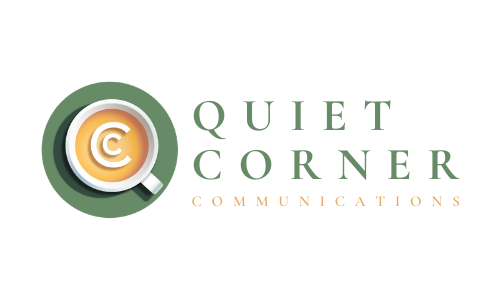The Case Against Social Media Schedulers
Remember when social media was a place to share pictures of your lunch and awkward high school throwbacks? You’d slap an artsy filter over an ill-framed, blurry photo, get 2-3 likes from your closest friends, and go about your business, blissfully unaware of algorithms or influencers. You know, the good old days, before Social Media Manager became a legitimate job description. (Don’t worry, I can barely remember it either.)
Today, keeping up with social media is more time-consuming than the Kardashians. The devil works hard, but Mark Zuckerberg works harder.
Unless you have an employee — or a whole team — dedicated to maintaining your social presence, staying on top of the ever-changing best practices for Instagram, Facebook, LinkedIn, TikTok, etc. can feel like a Herculean endeavor. And if you’re a busy small business owner or start-up founder, I doubt you have the time or resources necessary to grow your following.
Enter, social media schedulers, an industry within an industry. Promising seamless post distribution, powerful analytics, and other proprietary tools, social media schedulers have become a popular solution to bandwidth issues. I’m not going to deny these tools save time, or provide value; they do. But as the title of this post suggests, I am here to make a case against complete reliance on social schedulers — or at least give you some free advice on how to get the most out of your scheduling subscription.
Social media scheduling tools
But first, for those unfamiliar with social media schedulers, I want to take a moment to go over the most popular tools and share some common benefits.
Best social media schedulers
Though social media scheduling platforms have become ubiquitous in recent years, a few stand out from the crowd. For our purposes, let’s focus on three of the most popular scheduling tools:
Hootsuite — Founded way back in 2008, Hootsuite is one of the most established and well-respected social media schedulers on the market. Providing seamless integrations with all the major social platforms, Hootsuite offers unlimited posts — and the ability to schedule multiple posts — at every subscription level. Hootsuite’s dashboard, Streams, also facilitates comprehensive oversight of your social accounts and post performance, and allows for easy tracking of target keywords and trending topics — which is a great asset for finding brand-aligned curated content. The downside is all this functionality comes at a cost. Hootsuite starts at $49/month for just one user and ten social accounts. Three users and 20 social accounts will run you $129/month and it only goes up from there.
Later — If Hootsuite is the granddaddy of social schedulers, Later is the fun uncle. With much of the same capability and functionality as Hootsuite, Later also has a few unique offerings, such as its built-in Linkin.bio feature and hashtag suggestion tool. Later also takes a very visual tack to social scheduling. The preview mode, which allows you to visualize posts in a feed before publishing, has proven especially beneficial for Instagram users who want to see how something looks on the grid before posting. However, this benefit is also a shortcoming; Later does not allow you to schedule posts without an image or video, which can be a dealbreaker for those looking to schedule posts on Twitter and LinkedIn.
Buffer — Buffer is a popular choice for those looking to dip their toes into the world of social media schedulers. A clean, easy-to-use interface allows users with little social media experience to easily schedule posts, while the affordable price point makes Buffer an accessible option for cash-strapped businesses. Unfortunately, Buffer lacks some of the built-in features Hootsuite and Later have, instead choosing to divide their services into three different tools, with three different prices: Buffer Publishing (for scheduling), Buffer Reply (for inbox management and engagement), and Buffer Analyze (for analytics).
In addition to dedicated social scheduling tools, many social media platforms have begun offering built-in scheduling as a free or paid feature. Facebook Creator Studio replicates many scheduling features including analytics and content recommendations. The function is free but limited to Facebook and Instagram. Canva also offers a Content Planner as part of its Pro package, which is a great option for those who exclusively post content designed in Canva (we see you, and we respect you).
Benefits of social scheduling tools
One of the most popular reasons for adopting a social media scheduling tool is the time it saves. Instead of having to go into each app, upload content, and post it, scheduling tools allow you to plan, schedule, and post to multiple platforms from a single interface. Stemming from this time-saving capacity are several tangential benefits, including:
Optimized distribution — Instead of posting arbitrarily whenever you find the time, a scheduling tool allows you to plan content in advance, which means you can distribute content at the optimal time your followers are online.
Improved post consistency — If you want to grow your social media following you have to post consistently, but this is often a challenge for busy business owners. With a scheduling tool, you can plan a month’s worth of content in a single sitting, allowing you to ramp up content production without an ongoing investment of time.
Better strategy — If you’re posting content off the cuff, chances are your social strategy is lacking. But with a social scheduler, you gain the ability to strategically map out all your upcoming content. Bonus points if you use your scheduling tool’s analytics feature to inform your social strategy.
The problem with social media schedulers
I know what you’re thinking. Social media schedulers sound great! What could possibly be the downside? I hate to burst your bubble, but behind the obvious time-saving convenience, there are several significant problems with social schedulers. Let’s start with some of the superficial issues:
Expense — Nothing is free, especially time saved. Social schedulers know their value and charge accordingly. Worse, they often require add-ons to your subscription, leading to unanticipated expenses.
Relevance — The downside to planning content in advance is that things change fast in our unpredictable world. The content you plan for the following month might not be relevant or applicable when the time comes to post. Even generic content that seems future-proof can be rendered inappropriate if posted in the wake of the wrong current event. This means you need to maintain situational awareness of your planned content and be ready to make adjustments as necessary.
Technological difficulties — Technology is a great time-saving resource, as long as it works like it’s supposed to. Social schedulers are not immune from outages and glitches; and if your social scheduling tool is down, it means you either need to post your content manually or wait for the platform to resume working.
But these grievances pale in comparison to the real reason I dislike social schedulers: engagement — or rather, the lack thereof.
You can’t schedule engagement
We talk a lot about quality engagement on social media, and that’s because it’s absolutely essential! Without engagement, you lack a meaningful connection to your audience — a key component of growing a following.
With social schedulers, the ability to set it and forget it might be a great time-saver, but it’s often the death knell for engagement. Think about it, if you’re only ever going into your social scheduler to post pre-planned content, you’re neglecting to interact with the social platforms themselves. Not only is this a red flag to the various algorithms, it’s a red flag to followers. Interaction is a two-way street and if you’re not engaging with other accounts you can’t expect them to engage with yours.
On the contrary, when you manually post content, you’re forced to spend some time in the app. Just ten minutes of liking and commenting on other posts before posting your own content can make a significant difference in post performance. But with a social scheduler, you give up this essential interaction.
Best practices for social schedulers
For all the aforementioned reasons, social schedulers can be a great way to save time and post more consistently and strategically. However, for a social scheduler to be truly effective, you need to augment the scalability with a regular investment of in-app engagement. I recommend setting a recurring reminder to make sure you spend time engaging with other accounts, especially on the days you have content scheduled to post.
Alternatively, abandon your social scheduler and save time (and money) elsewhere. A well-organized editorial calendar is not only free, it can go a long way in facilitating a strategic plan for content creation. Pair that with pre-planned post reminders — either through your calendar or CMS — and you’ve got a bespoke tool that does almost everything a scheduling platform does. Yes, you still have to manually post your content, and yes, that does take time. But if you're engaging with other accounts during the same window of time you’re posting, you kill two birds with one stone and, more importantly, help your content perform better.
Still overwhelmed? I don’t blame you. But before you give up engagement for a time-saving scheduling app, think about investing your money in a savvy social media manager instead. Not only will a social media manager take care of content creation and distribution, they’ll ensure you’re not skimping on the essential engagement required to grow your following. And that’s worth more than a Hootsuite subscription.


